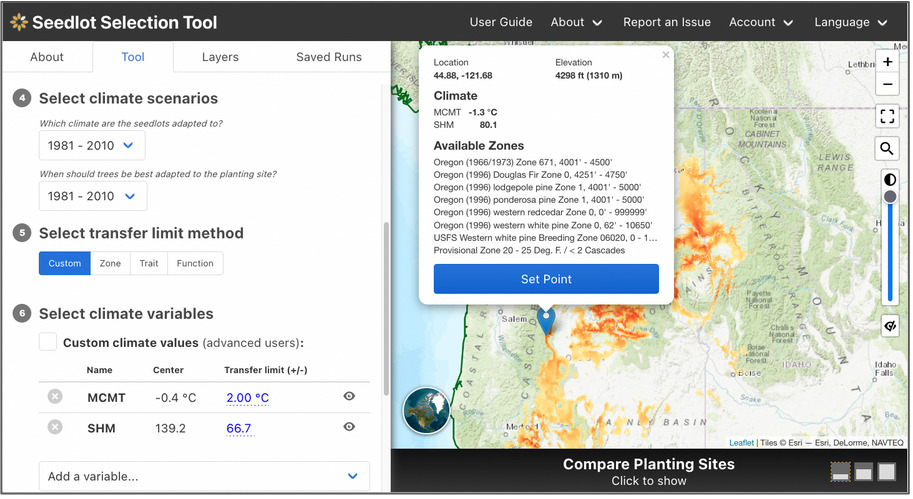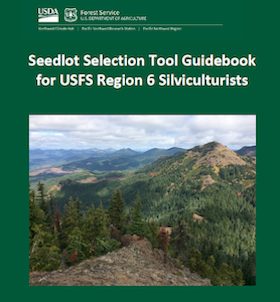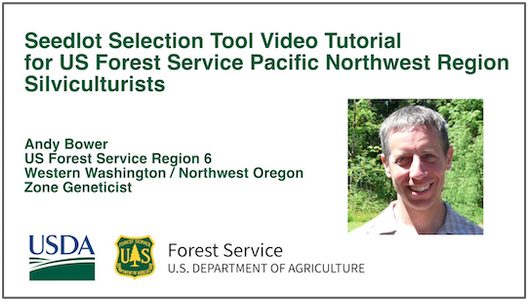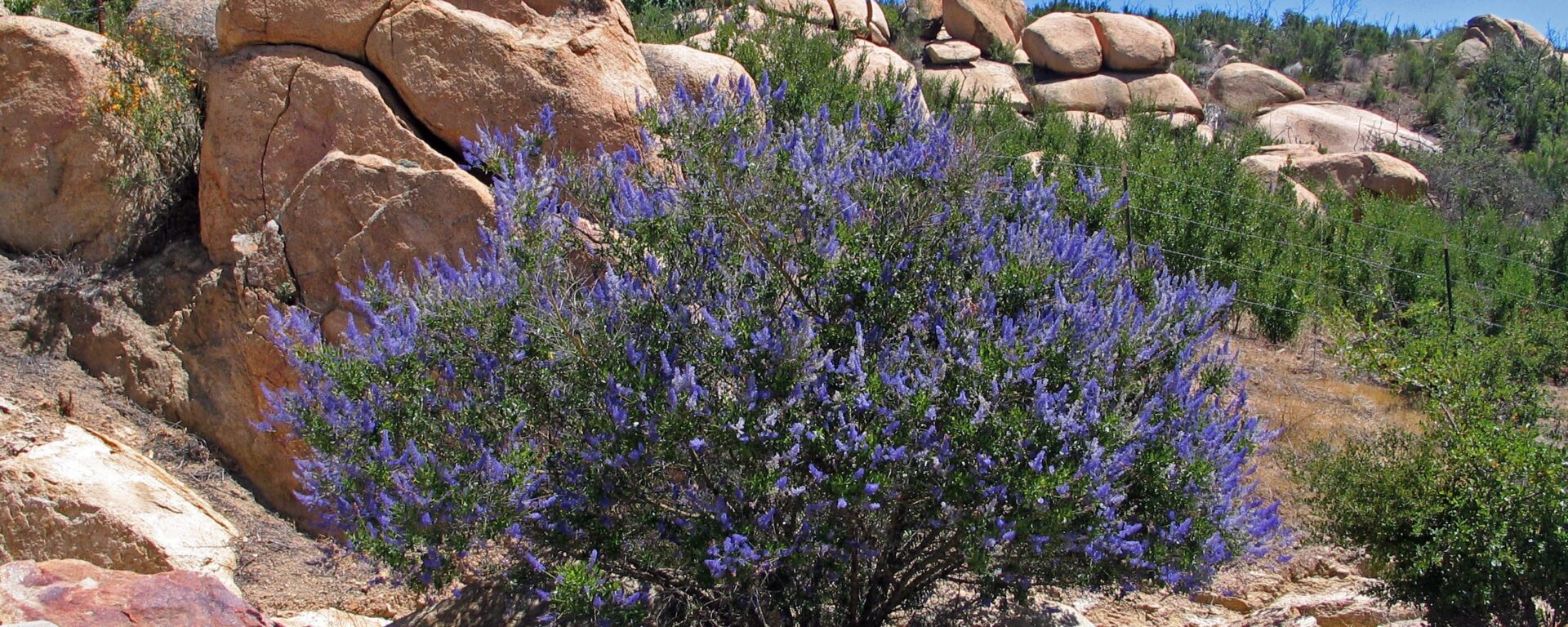Southern California NCCPs support edaphic endemic plants that face low genetic diversity due to reduced population sizes, geographic isolation, and loss of pollinators. To enhance the resilience of these species across their ranges, we must manage threats to increase population sizes, identify potentially suitable habitat to connect existing populations, find or restore new populations, and provide opportunities for shifting distributions due to climate change. The Management Strategic Plan for San Diego County requires prioritization and management for edaphic endemic plants, including the five species addressed in this proposal: Acanthomintha ilicifolia, Brodiaea filifolia, Deinandra conjugens, Nolina interrata, and Tetracoccus dioicus. Regional goals include maintaining or expanding existing occurrences or establishing new occurrences to increase resilience to environmental stochasticity, maintaining genetic diversity, and ensuring persistence over the long-term in native plant communities.
This study presents an approach for identifying and describing geographic areas that support edaphic endemic species and their habitat in a design that enhances resilience and provides opportunities for shifting distributions. We developed conceptual models to inform field studies and management, refined soils and vegetation attributes, and assessed regional population structure and threats. We used results to suggest prioritized locations for surveys, management, potential translocation, and additional conservation or acquisition. Project partners (U.S. Geological Survey and San Diego Management and Monitoring Program) modeled suitable habitat for the target species under current and future climate scenarios; we reference models as appropriate.
All target species occur on nutrient poor soils, and each species is associated with a unique suite of physical and chemical soil properties. We provide a range of variables for each species that can inform site selection for management and restoration. Testing soil before enhancing or augmenting small occurrences will allow us to locate suitable sites and eliminate or remediate unsuitable sites with remnant populations before investing management funds.
We used distribution data, habitat suitability models, genetic principles and information to develop regional population structures for each target species. We then identified populations or population groups important for long-term resilience and locations where conservation and management actions would be most beneficial.
Models predict declining habitat in the future for all target species under various climate scenarios, although the amount of predicted habitat remaining varies among species. We recommend conserving future predicted suitable habitat within or beyond San Diego County, and experimentally translocating target species into this habitat as climatic conditions change if monitoring indicates further species declines.
This work contributes to San Diego NCCP subarea plans in progress and other NCCPs. The project area includes the North County MSCP, South County MSCP, and MHCP.
CBI biologists Patricia Gordon-Reedy, Spring Strahm, and Jessie Vinje worked with the San Diego Management and Monitoring Program, U.S. Fish and Wildlife Service, California Department of Fish and Wildlife, The Nature Conservancy, Space and Naval Warfare Systems Command (SPAWAR), and San Diego County land managers on this project. The California Department of Fish and Wildlife funded this work under a Local Assistance Grant.
The U.S. Forest Service, Oregon State University, and Conservation Biology Institute have collaboratively developed the Seedlot Selection Tool to help forest managers match tree seed collections (called seedlots) with planting sites to help ensure the resilience of forests in a changing climate.

The Seedlot Selection Tool (or SST) is a free web-based decision-support tool that can be used to map planting locations based on either current climate data or a range of possible future climates across the conterminous U.S. and Mexico. Users can select a tree species, a climate scenario and relevant climate variables for the species, and other parameters to identify sources of seedlots appropriate for planting on a particular site or planting sites that are appropriate for planting seedlings from a particular seedlot. A valuable planning and educational tool, the SST helps explore possible future conditions, assess risk, and plan potential responses as part of a decision about which seedlot seedlings will be best adapted to a particular planting site in the future.

Seedlot Selection Tool Guidebook for US Forest Service Region 6 Silviculturists
Seedlot Selection Tool Video Tutorial for US Forest Service Region 6 Silviculturists

The SST was spearheaded by Glenn Howe at Oregon State University and Brad St. Clair at the USFS Pacific Northwest Research Station and developed by Nikolas Stevenson-Molnar, Brendan Ward, and Dominique Bachelet at CBI. Recently the USDA Climate Hub and USFS Region 6 staff worked with CBI to develop a step-by-step Guidebook and Video Tutorial for the Seedlot Selection Tool for Region 6 Silviculturists. These materials are useful to anyone who wants to learn about the use of this resource.
You may access the SST and detailed instructions at https://seedlotselectiontool.org/sst/.
Please see the USDA Climate Hub Seedlot Selection Tool Web Page for more information about the Guidebook and Tutorial Video.
Support for the SST came from the USFS, OSU, CBI, and the USDA Northwest Climate Hub.
CBI is expanding on previous work with the Peninsular Florida Landscape Conservation Cooperative (PFLCC) to further develop the PFLCC Simple Viewer to provide greater functionality and flexibility. In March 2017, CBI worked with PFLCC to incorporate PFLCC’s Blueprint version 1.0 into the viewer, and also created new reporting functionality to export on-screen results to PDF. In July 2017, CBI introduced the ability to aggregate multiple watersheds for display of summary information. This is particularly useful for users whose areas of interest and jurisdictions span multiple watersheds.
CBI is currently working on creating a Conservation Actions Tracker that will be added to the PFLCC Conservation Planning Atlas developed by CBI using Data Basin. This Conservation Actions Tracker will to allow users throughout Florida to enter information about conservation actions on the landscape – such as restoration activities – using an intuitive map-oriented interface. Users will also be able to explore any conservation actions in the system, and discover opportunities for collaboration and shared impact.
CBI is in the process of designing a new interactive application to showcase the PFLCC climate change adaptation guide so that users will be able to use interactive maps and data visualization to gain a greater understanding of climate change adaptations within Florida landscapes.
CBI and AECOM Technical Services, Inc. are coordinating and implementing regional rare plant monitoring in San Diego County to determine status, threats, and management actions for 27 highly restricted rare plants. This work is in partnership with the San Diego Association of Governments (SANDAG), San Diego Management and Monitoring Program (SDMMP), U.S. Geological Survey (USGS), and San Diego County land managers. Many of these rare plant species are declining due to invasive plants, small population size, or other threats. For some species, status or presence of one or more populations are unknown. Thus, key objectives of the program are to (1) determine current status, (2) document threats and vulnerabilities, and (3) identify appropriate management to ensure long-term species persistence.
CBI worked with project partners to test and refine the Management Strategic Plan (MSP) Inspect and Manage (IMG) rare plant monitoring protocol and data collection methods in 2014 and 2015, and we continue to refine the program, as necessary. Currently, CBI trains land managers and other participants in the IMG protocol method at workshops and in the field, conducts rare plant surveys across the county, compiles and manages survey data, and coordinates with project partners on all project components.
Regional monitoring data identify trends and priorities for management. Monitoring results guide land managers in routine management or provide information so they can apply for regional funding for management actions that exceed routine capacity and budgets. Next steps for the project include assessing rare plant population status and threats through 2021.
The availability and accessibility of accurate information increases the likelihood of efficient allocation of conservation resources to those areas that can maximize protection of biodiversity. This is especially true as conservationists respond to the complex and uncertain ecological changes triggered by climate change. To date, systematic conservation plans have been based on current patterns of biodiversity. However, climate-driven shifts in biomes, species, and ecosystem functions have the potential to make plans based on current patterns of biodiversity less effective. Conservation strategies that lack access to information on the location of areas that maximize resiliency, the methods for climate adaptation conservation planning as well as the pros and cons of the available approaches may misallocate resources by allowing key areas to remain unprotected.
CBI has built AdaptWest – Climate Adaptation Conservation Planning Database for Western North America powered by Data Basin in partnership with project Scientists Carlos Carroll, Josh Lawler and Scott Nielsen. AdaptWest will build on previous work such as the Yale Framework and Reed Noss’s three track approach to conservation planning (Noss and Cooperrider 1994) to provide a coherent planning framework for climate adaptation conservation. AdaptWest will include a comprehensive comparison and synthesis of the many planning approaches that have previously been developed, along with detailed explanation of the application of those methods to the majority of western North America. It will describe whether those conservation efforts are complementary or duplicative, develop a spatial database from the results of these analyses and provide users with integrative analyses and tools that can inform climate adaptation conservation planning and prioritization across much of western North America.
This project differs from previous studies in that it seeks to 1) compare a full spectrum of alternative methods over many contrasting regions, and 2) refine understanding of the conceptual relationship between the various methods and their practical relationship in the planning process. The results of this project, including physical habitat data, climate data, and species model based metrics and prioritizations as well as integrated priority mapping, will be available on Data Basin.
CBI is providing scientific and technical support to Greenpeace Canada and AV Terrace Bay as they work together to maintain the ecological integrity of the Kenogami-Ogoki Forests in Ontario, Canada while providing a sustainable wood supply to the AV Terrace Bay mill and protecting cultural values of First Nations peoples.
There are two major, interrelated components of the project. First, CBI is examining a series of important aspects of woodland caribou conservation in the region, which has been a major focus throughout boreal Canada for a number of years as ongoing development is continually eroding woodland caribou habitat resulting in serious declines in some populations. Using data provided by the Ontario government, CBI is attempting to identify key caribou activity areas, regional movement patterns, and crucial habitat.
CBI is also creating a series of risk-based protected areas scenarios by defining areas of high landscape value and high biological value. High biological value is determined by considering representation of native ecosystems, overall forest values, concentrations of rare species, wetlands, and vital woodland caribou habitat.
Upon development of the scenarios, CBI will facilitate a discussion to review the trade-offs of the different scenarios between AV Terrace Bay and Greenpeace Canada, using Data Basin to support the discussion given the spatially explicit nature of the effort. In the end, the hope is to forge a land management agreement between the two parties that will allow for sustained economic development of the forest resources while protecting the ecological integrity of the region (including woodland caribou viability) and cultural values of the local First Nations peoples.
CBI is working with Utah’s Division of Wildlife Resources (DWR) and The Bureau of Land Management to develop decision support models to inform current conservation initiatives in Utah and throughout the Colorado Plateau ecoregion. Based on previous REA (Rapid Ecoregional Assessment) work, CBI is updating the existing terrestrial landscape and aquatic intactness models for the Colorado Plateau ecoregion as well as updating habitat profiles for a number of identified conservation elements of interest (largely native species and communities). CBI is extending the models to cover the entire state of Utah as well as fine-tuning the models to be more effective at answering different management questions over smaller geographic areas.
CBI is also updating a previously created climate stress logic model with the most recent climate data from the 5th Intergovernmental Panel on Climate Change (IPCC) report as well as carryout some new analyses. For example, mapping potential climate refugia – areas where plants and animals may find shelter from changes in climatic conditions. CBI is also examining past and future climate variability to model climate velocity, which is the speed along the Earth’s surface needed to maintain constant climate conditions with the rationale being that species survival may depend as much on keeping pace with moving climate as the climate’s ultimate persistence. Results of the climate modeling will illustrate at the landscape level the degree to which locations in the landscape will be impacted by climate stress over the next century and help estimate the likelihood that certain species will survive shifting suitable habitat conditions.
Click here to see the console.
The Conservation Biology Institute, in collaboration with Ted Weller (USFS – Pacific Southwest Research Station) is expanding the functionality of Data Basin to create a clearinghouse for migratory bat detection data. This new functionality will allow users to: (1) import location-aware spreadsheet data into Data Basin; (2) dynamically visualize these locations and their attributes (such as number of bats of a particular species) within the interactive map; and, (3) explore charts of time series records across one or more locations. Additional tools under development will allow aggregation into a single master dataset, support form-based imports to more easily capture site and detector information from researchers during upload, and support export of records into spatial and non-spatial outputs.
More information about the exciting implications of this project can be found within an article on The Wildlife Society website.
Working as a subcontractor to Dynamac Corporation, the Conservation Biology Institute provided the scientific leadership and technical support for two BLM Rapid Ecoregional Assessment (REAs). The Sonoran Desert ecoregion was completed in the spring of 2012. A series of conservation elements were chosen for the eocregion and over 40 management questions addressed. Most questions pertained to a listed set of change agents, including urban and agriculture development, energy (including renewables), fire, invasive species, recreation, and climate change. For each conservation element, conceptual models were created and, for each specific management question, an accompanying GIS-based process model was created that outlined the data and steps necessary to generate an answer to the question. Part of the project required an exhaustive acquisition and review of available spatial data – hundreds the ecoregion. Extensive and sophisticated modeling had to be applied to multiple topics including target species habitat, natural ecological systems, climate change, invasive species, wildfire, and landscape integrity. Also, some custom analytical software had to be generated throughout the course of the project.
Project review was conducted using Data Basin and final results reside in a private group space on this web-based data management and mapping system. To inquire about access to the data and map-based results, please contact Karen Prentice at BLM Headquarters (kprentice@blm.gov).
To download the report and find out more information, Click Here.
Working as a subcontractor to Dynamac Corporation, the Conservation Biology Institute provided the scientific leadership and technical support for two BLM Rapid Ecoregional Assessment (REAs). The Colorado Plateau ecoregion was completed in the spring of 2012. A series of conservation elements were chosen for the eocregion and over 40 management questions addressed. Most questions pertained to a listed set of change agents, including urban and agriculture development, energy (including renewables), fire, invasive species, recreation, and climate change. For each conservation element, conceptual models were created and, for each specific management question, an accompanying GIS-based process model was created that outlined the data and steps necessary to generate an answer to the question. Part of the project required an exhaustive acquisition and review of available spatial data – hundreds the ecoregion. Extensive and sophisticated modeling had to be applied to multiple topics including target species habitat, natural ecological systems, climate change, invasive species, wildfire, and landscape integrity. Also, some custom analytical software had to be generated throughout the course of the project.
Project review was conducted using Data Basin and final results reside in a private group space on this web-based data management and mapping system. To inquire about access to the data and map-based results, please contact Karen Prentice at BLM Headquarters (kprentice@blm.gov).
To download the full report and find our more information on the Colorado Plateau REA, click here.
